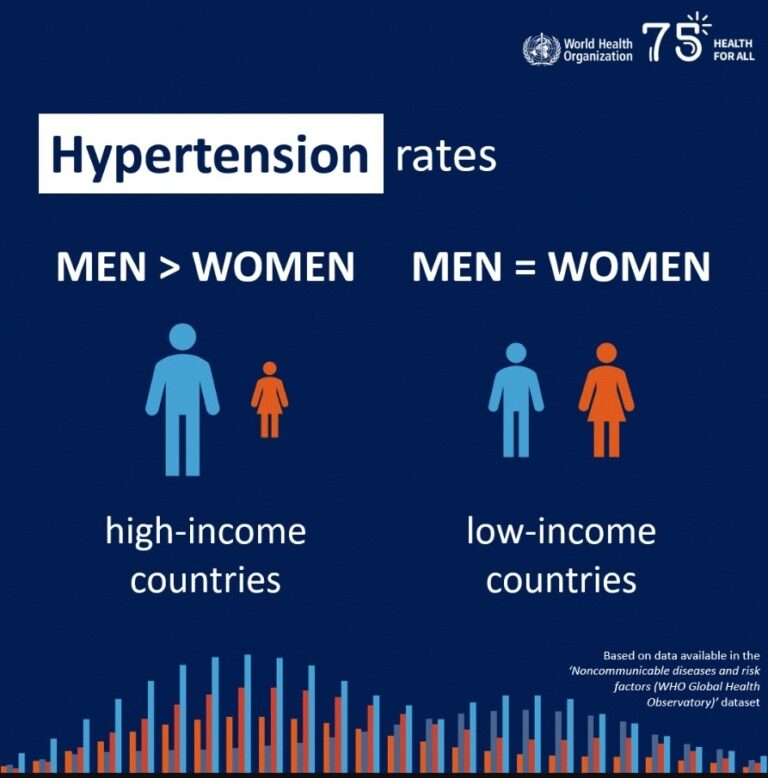This feature delves into the global gender health gap, drawing on data from key organisations like the World Health Organization (WHO), UNICEF, and the World Bank to highlight regions facing the greatest challenges and improvements seen in others.
Access to healthcare is a fundamental right, yet for millions of women around the world, receiving adequate medical care remains a significant challenge.
Gender disparities in healthcare access persist globally, with women in many regions experiencing worse health outcomes than men due to systemic inequalities.
These disparities manifest in several areas, from maternal mortality rates to access to reproductive health services and healthcare spending on women-specific conditions.
Maternal Mortality Rates: A Stark Indicator of Inequality
One of the clearest markers of gender disparities in healthcare is maternal mortality. According to the WHO, approximately 800 women die every day from preventable causes related to pregnancy and childbirth, with 94% of these deaths occurring in low- and middle-income countries. Sub-Saharan Africa, in particular, bears the brunt of these statistics. The maternal mortality ratio in the region is 533 deaths per 100,000 live births, compared to 12 deaths per 100,000 live births in high-income countries.
These alarming figures underscore the deep-rooted issues of inequality in access to healthcare. Women in low-income regions often lack access to skilled birth attendants, emergency obstetric care, and basic medical supplies.
The disparity is not just in the availability of services but also in the quality of care provided. Countries like Nigeria, which accounts for nearly 20% of global maternal deaths, illustrate the profound impact of poor healthcare infrastructure and gender biases on women’s health outcomes.
On the flip side, some countries have made significant progress in reducing maternal mortality. For instance, Bangladesh has halved its maternal mortality rate since 2000, thanks to expanded access to skilled birth attendants and improved family planning services. This progress highlights the importance of targeted investments in maternal health services and the role that political will plays in addressing gender-based health disparities.
Access to Reproductive Health Services
Access to reproductive health services is another critical area where gender disparities are evident. According to UNICEF, millions of women around the world lack access to family planning, safe abortion services, and adequate prenatal and postnatal care. This lack of access disproportionately affects women in low-income countries, where cultural and legal barriers often prevent women from exercising their reproductive rights.
Globally, about 214 million women who want to avoid pregnancy do not have access to modern contraception. In Africa, the unmet need for family planning is particularly high, with one in four women unable to access contraceptives. This unmet need leads to unintended pregnancies, unsafe abortions, and maternal deaths, exacerbating the health risks that women face.
However, some regions have made notable strides. In Rwanda, for example, the government has implemented policies to improve access to reproductive health services, including free family planning programs and community health initiatives that ensure even women in rural areas receive the care they need. As a result, the contraceptive prevalence rate has increased from 17% in 2005 to over 50% in 2020, leading to significant improvements in maternal health outcomes.
Gender Disparities in Health Insurance Coverage
Healthcare financing plays a crucial role in determining who has access to medical services. Across the globe, women are less likely than men to have health insurance, contributing to their limited access to healthcare. According to the World Bank, women are often left out of health insurance schemes due to their lower participation in formal employment, where such benefits are typically offered. In countries without universal healthcare, women face additional barriers to accessing care, as they are more likely to rely on out-of-pocket payments, which can be prohibitively expensive.
In India, for instance, women make up the majority of informal workers, and only a small percentage are covered by health insurance. The high cost of medical care forces many women to delay or forgo necessary treatments, further widening the gender health gap. In contrast, countries like Thailand, which have implemented universal healthcare systems, have significantly reduced the gender disparities in healthcare access. In Thailand, both men and women benefit equally from the universal coverage scheme, which provides free access to essential health services.
Healthcare Spending on Women-Specific Conditions
Despite women’s unique health needs, healthcare spending on women-specific conditions such as breast cancer, cervical cancer, and reproductive health is often inadequate. According to a study by the World Bank, many countries allocate less than 10% of their health budgets to conditions that disproportionately affect women. This underfunding leads to delayed diagnoses and poorer outcomes for women suffering from conditions like breast and cervical cancer.
However, some countries are addressing this gap. For example, in Mexico, the government has increased funding for women’s health programs, particularly in the areas of breast cancer screening and cervical cancer prevention. The expansion of HPV vaccination programs in Mexico has significantly reduced cervical cancer rates, showing that targeted healthcare spending can yield positive outcomes for women.
The global gender health gap remains a pressing issue, with millions of women around the world still struggling to access the healthcare they need. Maternal mortality rates, access to reproductive health services, health insurance coverage, and healthcare spending on women-specific conditions all point to systemic inequalities that must be addressed. However, the progress seen in countries like Rwanda and Bangladesh demonstrates that change is possible when governments prioritize women’s health.


